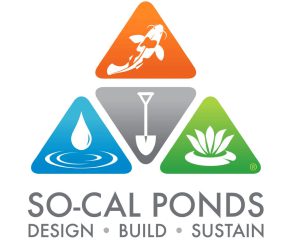
You’ve got a new pond, or maybe you’ve got a new filtration system, and you most likely know some of the basics about pond care. Keeping debris out of your skimmer on a regular basis, trimming aquatic plants, adding bacteria, etc. However, in those first few weeks with a new pond you may notice your brand-new pond go from beautiful, to green or brown and unbalanced! This is not something to stress about! Your pond is attempting to balance itself out naturally. The important process that is occurring is known as the Nitrogen Cycle.
You may remember learning about the nitrogen cycle back in grade school, known as the building block of all organic life forms.If not, don’t stress! With this article, we hope to simplify and help you to better understand what is occurring in your new pond. We want to assure you that the process taking place is normal and important to ensure a healthy and sustainable oasis!
The nitrogen cycle is responsible for biological filtration to keep the water at safe levels to support aquatic life including fish and plants. A lot of the time, new pond owners are alarmed by the many forms of nitrogen in the pond, or they see an abundance of algae. Causing them to alter the water chemistry, which disrupts the nitrogen cycle the pond is trying so hard to establish.
When your pond is first starting up, waste from aquatic life along with any dead organisms or uneaten food decomposes and are then broken down by bacteria and fungi. This results in deadly ammonia! Ammonia is extremely toxic to pond inhabitants.
Periodically monitoring your ponds ammonia levels keeps your fish safe from sickness and lessens the risk of overwhelming algae!
Keep ammonia levels below 1ppm.
Ammonia is broken down by beneficial bacteria or Nitrosomonas, oxygen-loving bacteria! It takes around 6 to 10 weeks for your pond to develop its own beneficial bacteria. A new pond can go through a rising ammonia cycle, this can be shortened by purchasing
Nitrosomonas feed on both oxygen and bacteria, this activity causes excretion of a chemical called nitrite. However, even at low concentrations, nitrites can be harmful to aquatic animals.
Keep nitrite levels below 0.25ppm
Another organism called nitrobacter will reduce the nitrite in the water and convert them to harmless nitrates. Relatively harmless nitrate is either absorbed by algae and aquatic plants, or the nitrate changes back to nitrogen gas. Plants absorb and metabolize nitrates as a food source. Plants clean and pump oxygen into the water.
Nitrate concentrations of 120ppm can result in fish death
Remember… Clear water does not mean clean water! Just because your ponds water looks healthy, does not mean it is. Clear water can still have harmful levels of ammonia and nitrites! Always remember to check your levels!